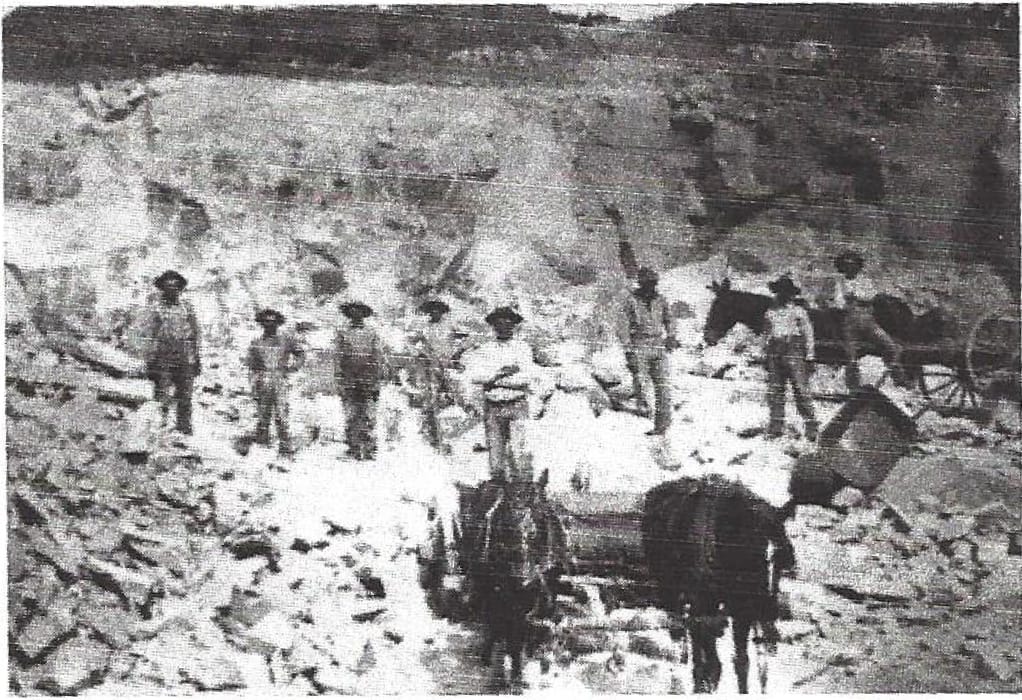Career options in early Douglas County

By Joe Gschwendtner; photos courtesy of Our Heritage and People of Douglas County

FARMING: Early pioneers had limited options for a livelihood. Most were in agriculture of some kind, as subsistence was the first order of business. Through trial and error, settlers found the workable methods, soil and water sources that could support their needs. Many found Plum Creek bottomlands ideal for fruits and vegetables, especially beets and potatoes. The spud reigned supreme until battered by several devastating early frosts in the 1890s followed by a potato blight. Other settlers became dairy farmers and by 1870, dairying was the county’s leading industry and gave rise to a string of creameries from Larkspur to today’s Highlands Ranch.
CATTLE RANCHING: In the beginning, it was about raising Texas long and shorthorns. Natural prairie grasses that thrived in the county favored the industry. As more settlers poured into the area staking out their land, barbed wire appeared, limiting free-range grazing. Individual herds proceeded to get smaller and scrawnier. Late 1880 blizzards buried most range grasses making winter forage grim. Even as ranchers reacted by adding to landholdings to grow their own feeds, conditions took their toll. By 1890, the county had a mere 40,000 head of cattle.
RAILROADING: Through the determination of 33 year-old General William Jackson Palmer, railroads came early to the county. Palmer became convinced of a need for a southern route from Denver to Mexico. Others long dissuaded, cited the steep grades, tight turns and narrow rock-ledged canyons.
Frustrated, Palmer terminated his construction manager position with the Kansas Pacific Railway and founded the Denver & Rio Grande Railway. Singlehandedly, he raised money to buy land grants and rights-of-way from the U.S. government. Conferring with business partner William Bell in London about strategies, they visited senior engineers and inspected rail networks throughout England. In Wales, they found the solution to their Rocky Mountain dilemma: narrow gauge and lighter, iron rails. Standard rails were 4’ 8 ½ inches; narrow gauge, only 3’. Less money and space. Brilliant!

Scene in the Santa Fe Quarry near the turn of the century.
By August 1871, Palmer had laid track to Fountain Colony (later to be called Colorado Springs). With the line’s opening, Castle Rock became a major lumber, rhyolite and dairy transshipment point, ensuring permanent jobs for the locals for the foreseeable future.
QUARRYING: Blessed by nature 37 million years ago, Castle Rock had several commercially exploitable rhyolite deposits. A massive eruption near Mt. Princeton hurled airborne liquid rock that settled out in the Castle Rock area. Known then as “Wall Mountain Tuff” and Castle Rock Rhyolite today, these twenty foot thick deposits on buttes gave us a cottage industry. Three quarries and Palmer’s railroad shipped it far and wide, an estimated 30,000 carloads by 1900.
LOGGING: In 1859, the Wildcats were a treasure trove of wood, conveniently straddling the D&RG route. Since vast quantities of wood were needed by builders, quarries and the railroad, sawmills became immensely profitable in Douglas County. Steam-driven, portable sawmills speckled many of our hillsides. The first and busiest was operated by D.C. Oakes, across from the Pretty Woman Ranch in Riley’s Gulch on Daniels Park Road. At one time, he employed as many as 35 men.
Unfortunately, towns like Greenland and Larkspur almost disappeared as their old growth trees fell to the axe and saw. At century’s end, railroad ties had become scarce as most large diameter trees had already been felled.